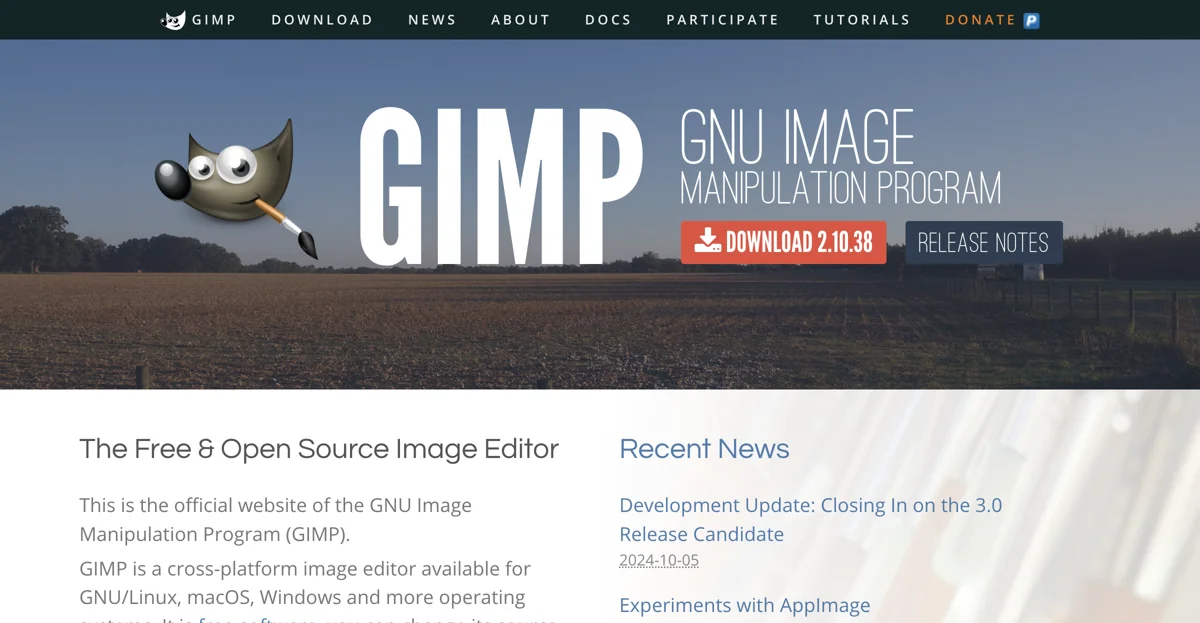GIMP - GNU Image Manipulation Program
GIMP, or the GNU Image Manipulation Program, is a powerful and versatile image editor that is completely free and open-source. Available on multiple platforms including GNU/Linux, macOS, and Windows, GIMP is designed for everyone from graphic designers to photographers and illustrators. With its extensive features and customization options, GIMP stands out as a top choice for image manipulation.
Key Features of GIMP
High-Quality Photo Manipulation
GIMP provides an array of tools for high-quality image manipulation. Whether you're retouching photos, restoring old images, or creating creative composites, GIMP allows you to unleash your imagination. The only limit is your creativity!
Original Artwork Creation
Artists can leverage GIMP's flexibility to transform images into unique creations. With a variety of brushes and tools, GIMP empowers artists to express their vision without constraints.
Graphic Design Elements
GIMP is widely used for producing icons, graphical design elements, and art for user interface components and mockups. Its robust features make it an essential tool for graphic designers.
Programming Algorithms
For developers, GIMP offers a high-quality framework for scripted image manipulation. It supports multiple programming languages including C, C++, Perl, Python, and Scheme, making it a great choice for those looking to automate tasks or create custom plugins.
Integration in Desktop Publishing Workflows
GIMP excels in color management, ensuring high-fidelity color reproduction across both digital and printed media. It works seamlessly with other free software like Scribus and Inkscape, making it a key component in desktop publishing workflows.
Extensibility & Flexibility
GIMP's extensibility is one of its standout features. With integration capabilities for various programming languages, users can customize their experience significantly. The community has developed a vast number of scripts and plugins, enhancing GIMP's functionality even further.
Pricing
GIMP is completely free to download and use. As an open-source software, you can also modify its source code and share your changes with the community. For the latest version and updates, always check the .
Practical Tips for Using GIMP
- Explore Plugins: Take advantage of the numerous plugins available to enhance your GIMP experience.
- Utilize Tutorials: The GIMP community offers a wealth of tutorials that can help you master the software.
- Customize Your Workspace: Tailor the interface to suit your workflow for increased productivity.
Competitor Comparison
While GIMP is a powerful tool, it’s worth comparing it with other image editing software like Adobe Photoshop and Affinity Photo. GIMP is free and open-source, making it accessible to everyone, while Photoshop offers a more polished user experience and advanced features at a subscription cost. Affinity Photo is a one-time purchase alternative that provides many similar features to Photoshop but lacks some of GIMP's extensibility.
Frequently Asked Questions
Q: Is GIMP suitable for professional use?
A: Absolutely! Many professionals use GIMP for various projects, thanks to its extensive features and customization options.
Q: Can I use GIMP for vector graphics?
A: While GIMP is primarily a raster graphics editor, it can handle some vector graphics tasks, but for full vector capabilities, consider using Inkscape.
Conclusion
GIMP is a powerful, free, and open-source image manipulation tool that caters to a wide range of users. Whether you're a professional or a hobbyist, GIMP provides the tools you need to bring your creative visions to life. Don't hesitate to download it and start exploring its capabilities today!
Call to Action
Ready to dive into the world of image manipulation? and unleash your creativity!

